Every now and then, it’s nice to just point somewhere on a map and head out with no plan. In Taiwan, where convenience reigns, food options are plentiful and people are generally friendly and helpful, this type of trip is that much easier to pull off. One day last November, a spur-of-the-moment day hike in the hills of Chiayi County turned into a surprisingly memorable experience that impressed on me once again how fortunate we all are to call this island home.
The scenery I walked through that day — a mix of forest and farms reaching up into the clouds — was sublime. Along the way, I encountered people who take pride in their little corner of the country and are happy to welcome visitors from near and far. If a mix of culture, scenery, markets and a bit of exercise sounds appealing, head to Chiayi County on a sunny day this fall and experience it for yourself.
TRAINS, TRAILS AND TEMPLE HOSPITALITY

Photo: Tyler Cottenie
My day began at Zhangnaoliao Station (樟腦寮站) on the Alishan Forest Railway (阿里山森林鐵路). A short road walk behind and above the train station is the Duli Mountain (獨立山) trailhead. At the first junction, I took the right-hand trail, which drops down to a suspension bridge and then climbs up the steep western slope of Duli Mountain. The railroad ascends this mountain through a complex spiral and figure-eight pattern that has earned it recognition by Guinness World Records. As I ascended the well-built trail, I crossed the railroad in four separate places and watched the tourist train go by, pushed up the mountain by its quaint red locomotive.
The train starts the climb from Zhangnaoliao at about 10:10am and 11am daily, so position yourself at the first or second railroad crossing on the mountain at one of these times for the best views. If you get train tickets to the Dulishan Station, you can start your walk near the top and avoid most of the uphill walking.
After summiting Duli Mountain (an optional side trail), I continued uphill toward the Fengtianyan Temple (奉天岩), a prime example of what makes rural Taiwan so special. One level below the temple plaza is a long row of shelves filled with plastic bins, labeled sequentially. Locals who come here often rent these bins from the temple and leave snacks, noodles, utensils and other miscellaneous items inside. None of these need to be locked up; in a place like this, theft and vandalism are far from everyone’s mind.
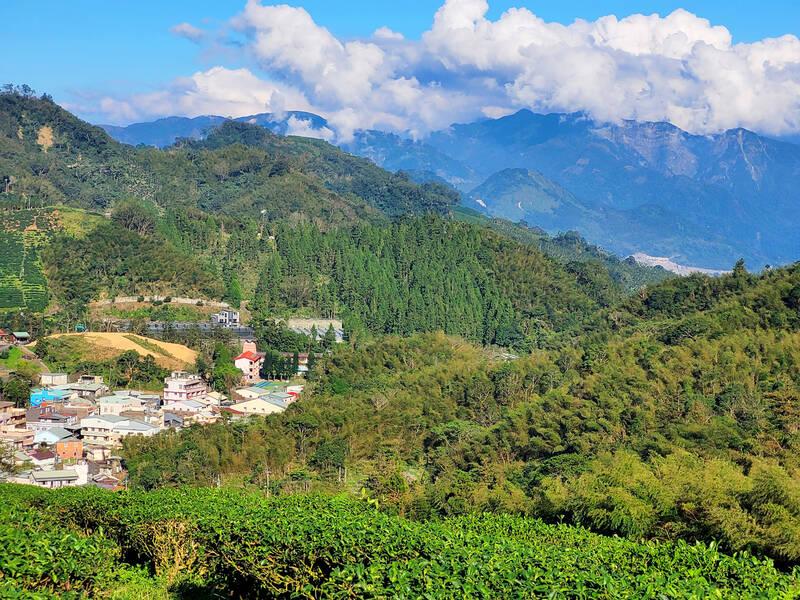
Photo: Tyler Cottenie
This spirit of mutual trust and cooperation is even more evident in the plaza outside the temple. Here, a full outdoor kitchen complete with running water, propane burners, all manner of cooking pots, dishes, utensils and tea sets is available 24/7 for anyone to use. The temple takes donations for propane, but essentially everything here is free. Locals clean up after themselves, showing great respect for the facility and other members of the public who will use it in the future.
INTO THE CLOUDS
Above the temple, the mountain is covered in what might as well be Chiayi’s official county tree: the betelnut palm. These large monoculture plantations, though not a sustainable form of agriculture, are nevertheless photogenic with their frond canopies and the countless, uniformly thin and straight trunks underneath.
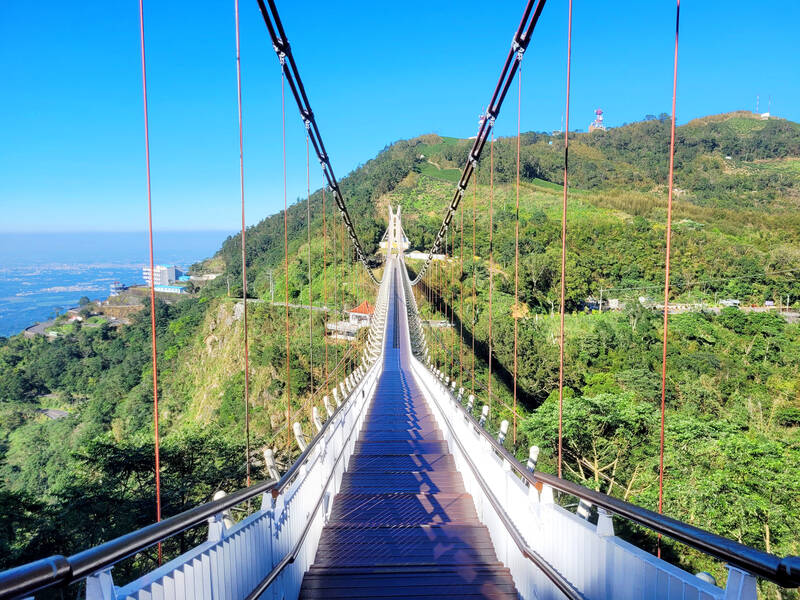
Photo: Tyler Cottenie
Above the plantation, I started to get a sense of how high I had climbed as the trail traced its way along a narrowing ridge and I got glimpses of lowlands further north. About 45 minutes after leaving the temple below, the well-manicured rows of a tea field suddenly came into view, indicating my arrival at the summit of Dalongding (大巃頂).
My phone’s battery was already getting low and I was desperate for a charge. As luck would have it, the tea farmers here have a shop selling drinks and snacks, as well as tenting and indoor accommodations. They were happy to let me charge my phone for a while, so I bought a bottle of their cold-brew tea and went outside to sit down and take in the view of the very plants that produced my drink.
On a sunny November day, up there at 1,150 meters in elevation, the temperature was pleasant and I was right at the level where clouds were forming. The rich green of the tea plants and deep blue of the clear sky soon gave way to pure white, as Dalongding was shrouded in fog. I sat mesmerized as the clouds came and went, teasing me with colorful, expansive views down into the valley below one minute, and a white-out the next: white and green, then white and blue, then blue and green, then white again.
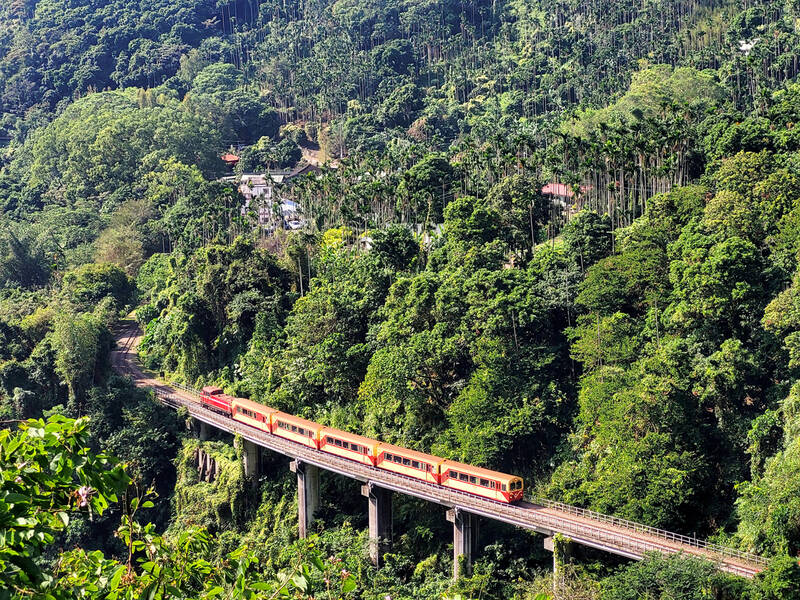
Photo: Tyler Cottenie
DOWN TO TAIPING
With my phone charged up to 70 percent, I thanked the owners and continued on my way. Just past the summit tea field, the trail starts its steep descent down the other side of the mountain, heading toward the mountain village of Taiping (太平村). Having passed through forest, betelnut and tea, I was pleasantly surprised to find the vegetation on this side different yet again. Interspersed among the tea fields here were large stands of bamboo, whose loose yellow leaves contrasted sharply with the tight rows of tea, painting the hillsides with a joyful mixture of color and texture.
After another 45 minutes, I crossed a pedestrian bridge above a road and entered Taiping Village. The wide brick road and sheer number of shops lining the main street are evidence that this place must be filled with tourists on weekends, but on a random Tuesday, it was very quiet. I had not come prepared with a lunch, as I was counting on there being good food available in Taiping. Once again, Taiwan did not disappoint.
Right next to the police station, in a low, unassuming tin-roofed building, I had one of the best noodle dishes I’ve ever had in Taiwan. This plate of wheat vermicelli, cooked with greens and mushrooms and seasoned with tea oil, was so good I went back and ordered a second.
With so much tea production in Chiayi County, tea oil is a common ingredient in local cuisine. I have eaten it on wheat vermicelli noodles before, but this particular recipe was especially savory and really hit the spot after hiking over from the next valley.
While in Taiping, don’t miss the spectacular view of the plains from the west side of the village. Taiping sits on the first line of mountains that spring up dramatically from the Chiayi plains, 950 meters below. On a clear day, you can see all the way to the coast and it feels more like you’re looking out the window of an airplane than standing on solid ground. Notice the dramatic Taiping 36-Bend Road zigzagging down to the plains, compressing 6.5 km of road length into less than 2 km of forward distance.
To finish off your day, take a walk across the Taiping Suspension Bridge (NT$100), known as the “Taiping Cloud Staircase” (太平雲梯) in Chinese, that spans the gorge at the entrance to Taiping. From here, you can see the full extent of Chiayi, from the coastline far to the west, to the low mountain farms that surround you, to the high craggy peaks of the Alishan Mountain Range far to the east.

In recent weeks the Trump Administration has been demanding that Taiwan transfer half of its chip manufacturing to the US. In an interview with NewsNation, US Secretary of Commerce Howard Lutnick said that the US would need 50 percent of domestic chip production to protect Taiwan. He stated, discussing Taiwan’s chip production: “My argument to them was, well, if you have 95 percent, how am I gonna get it to protect you? You’re going to put it on a plane? You’re going to put it on a boat?” The stench of the Trump Administration’s mafia-style notions of “protection” was strong
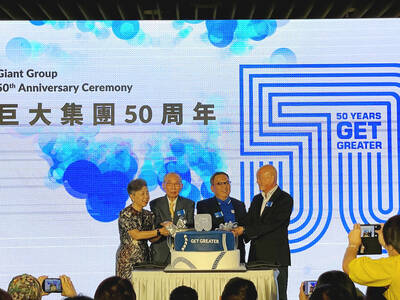
Late last month US authorities used allegations of forced labor at bicycle manufacturer Giant Group (巨大集團) to block imports from the firm. CNN reported: “Giant, the world’s largest bike manufacturer, on Thursday warned of delays to shipments to the United States after American customs officials announced a surprise ban on imports over unspecified forced labor accusations.” The order to stop shipments, from the US Customs and Border Protection (CBP), came as a surprise to Giant, company officials said. Giant spokesman Ken Li (李書耕) said that the CPB never visited the company’s factories to conduct on-site investigations, nor to interview or

Every now and then, it’s nice to just point somewhere on a map and head out with no plan. In Taiwan, where convenience reigns, food options are plentiful and people are generally friendly and helpful, this type of trip is that much easier to pull off. One day last November, a spur-of-the-moment day hike in the hills of Chiayi County turned into a surprisingly memorable experience that impressed on me once again how fortunate we all are to call this island home. The scenery I walked through that day — a mix of forest and farms reaching up into the clouds
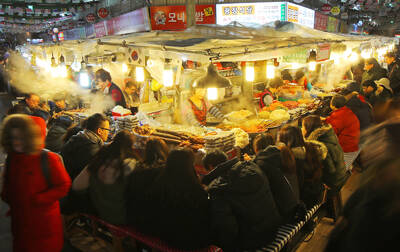
“Eighteen years ago, people didn’t even know the name of this ingredient,” says 58-year-old Gil Sa-hyeon, holding up a cluster of dried brownish stems. “Now it’s everywhere.” His shop, Joseon Yakcho, sits in the heart of Seoul’s Yangnyeongsi Market, South Korea’s largest traditional medicinal herb market, its streets lined with shops displaying buckets of herbs such as licorice root and cinnamon bark that spill on to the pavements, filling the air with their distinct, earthy aroma. The ingredient Gil is referring to is hovenia dulcis, known in Korean as heotgae — the oriental raisin tree that’s become the cornerstone of South Korea’s